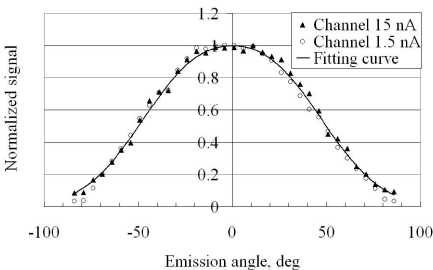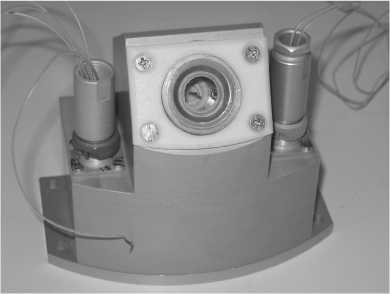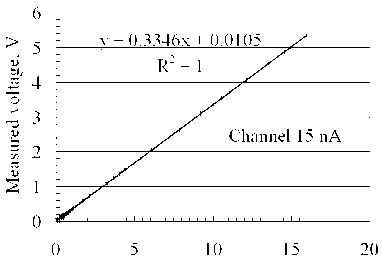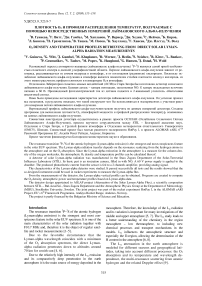02 density and temperature profiles retrieving from direct solar Lyman-alpha radiation measurements
Автор: Guineva V., Witt G., Gumbel J., Khaplanov M., Werner R., Hedin J., Neichev S., Kirov B., Bankov L., Gramatikov P., Tashev V., Popov M., Hauglund K., Hansen G., Ilstad J., Wold H.
Журнал: Солнечно-земная физика @solnechno-zemnaya-fizika
Статья в выпуске: 12 т.2, 2008 года.
Бесплатный доступ
The resonance transition 2P-2S of the atomic hydrogen (Lyman-alpha emission) is the strongest and most conspicuous feature in the solar EUV spectrum. The Lyman-alpha radiation transfer depends on the resonance scattering from the hydrogen atoms in the atmosphere and on the 02 absorption. Since the Lyman-alpha extinction in the atmosphere is a measure for the column density of the oxygen molecules, the atmospheric 02 density and temperature profiles can be calculated thereof. A detector of solar Lyman-alpha radiation was manufactured in the Stara Zagora Department of the Solar-Terrestrial Influences Laboratory (STIL). Its basic part is an ionization camera, filled in with NO. A 60 V power supply is applied to the chamber. The produced photoelectric current from the sensor is fed to a 2 channels amplifier, providing analog signal. The characteristics of the Lyman-alpha detector were studied. It passed successfully all tests and the results showed that the so-designed instrument could be used in rocket experiments to measure the Lyman-alpha flux. From the measurements of the detector, the Lyman-alpha vertical profile can be obtained. Programs are created to compute the 02 density, atmospheric power and temperature profiles based on Lyman-alpha data. The detector design appertained to ASLAF project (Attenuation of the Solar Lyman-Alpha Flux), a scientific cooperation between STIL - Bul.Acad.Sci., Stara Zagora Department and the Atmospheric Physics Group at the Department of Meteorology (MISU), Stockholm University, Sweden. The joint project was part of the rocket experiment HotPay I, in the ALOMAR eARI Project, EU's 6th Framework Programme, And0ya Rocket Range, Andenes, Norway. The project is partly financed by the Bulgarian Ministry of Science and Education.
Короткий адрес: https://sciup.org/142103276
IDR: 142103276 | УДК: 523.9,
Текст научной статьи 02 density and temperature profiles retrieving from direct solar Lyman-alpha radiation measurements
The resonance transition 2P–2S of the atomic hydrogen (Lyman-alpha emission) is the strongest and most conspicuous feature in the solar EUV spectrum. It is one of the main characteristics of the solar radiation together with F10.7 MHz and, therefore it is the object of regular satellite and rocket measurements [1–5].
Due to the favorable circumstance that the Lyman-alpha wavelength coincides with a minimum of the O2 absorption spectrum, the direct Lyman-alpha radiation penetrates down to altitudes around 70 km for zenith sun [4, 6].
Due to the relatively high intensity of the Lα emission and its comparatively deep penetration in the earth atmosphere it is the main source of energy deposited in the mesosphere. Therefore, the knowledge of the Lα radiation and its variation is important for many investigations of the middle and upper atmosphere [5, 7]. The Lα study leads to a better understanding of the chemistry in the region mesosphere – low thermosphere, to including new chemical processes and transport mechanisms in the models. Lα influences the atmospheric structure and especially the D-region, allowing the determination of the H content in the atmosphere [6, 8].
The L α attenuation in the earth atmosphere is modeled for different seasons and geographical latitudes, taking into account different processes: the O 2 absorption and its temperature and wavelength dependence, the multi-resonance scattering from atomic hydrogen and the related Doppler effect [9].
Rocket sounding is the basic method to study the mesosphere and the low thermosphere. Using rocket observations of the attenuation of the solar L α radiation, registered by ionization chambers, the pressure, O 2 density and temperature in the mesosphere can be derived by traditional methods [10–13].
The importance of the L α penetration in the thermosphere and mesosphere as a main source of energy input and its connection with the O 2 concentration and the temperature as well with all processes in these regions is known long ago. At the same time, lots of ambiguities in our concepts for the chemical and physical processes in the mesosphere, low thermosphere and, in particular near the mesopause, have been found out. Such not fully clarified questions are, for example, the influence of L α on the trace gases, the role of CO 2 and CH 4 on the temperature distribution, the origin and structure of NLC and the properties of their constitutive ice particles [6–18]. That is why the L α penetration in the atmosphere and the resulting middle atmosphere processes are important features to be investigated.
Detector of solar Lyman-alpha radiation (ASLAF)
The solar Lyman-alpha detector was designed in the Stara Zagora Department of STIL for rocket measurements of the direct solar radiation flux in the EUV, at the L α wavelength range (105–130 nm). The manufactured ASLAF models passed successfully all tests performed before a rocket launch. All measured characteristics were within the borders of the expected values and with very good quality. The device is of very good quality and it is expedient to be used in rocket experiments for measuring the L α flux.
ASLAF is described in detail in [19]. To the sensor, an ionization chamber, filled with NO (under 20 mb pressure), a voltage of 60 V is applied. A week current is produced, which is amplified many times (through a pre-amplifier and a two-stage amplifier) and analog signal in the range 0–5 V is fed to the telemetry. There are two working channels measuring maximal current of 1.5 nA and 15 nA, and two additional channels, monitoring the power supply and the temperature to the chamber. The final appearance of the detector is presented in Fig. 1. The dependence of the instrument response on the angle of radiation incidence is shown in Fig. 2. It is fitted well by the curve
- a ( x - b )2 - a ( x + b )2
y = e + e . (1)
c

Fig. 2. Dependence of the measured signal on the incident radiation angle for both ASLAF channels. The obtained fitting curve is drawn in.
The Lyman-alpha detector response to the emission intensity is linear from both channels. The dependence of the measured voltage on the flown electric current is linear for both data channels and constant signal ratio is obtained. The result from the 15 nA channel is shown in Fig. 3. Using these characteristics, the orbital data and the Sun position data, the L α profile could be computed from ASLAF measurements, obtained during a rocket experiment.
Retrieval of the density, pressure and temperature profiles
The interaction of the Lyman-alpha radiation with the atmospheric constituents ionises the NO molecules, thus giving rise to the ionospheric D-layer and produces the water vapour photolysis, one of the main H2O loss processes. The Lyman-alpha radiation transfer depends on the resonance scattering from the hydrogen atoms in the atmosphere and on the O 2 absorption. Since the Lyman-alpha extinction in the atmosphere is a measure for the column density of the oxygen molecules, the atmospheric temperature profile can be calculated thereof. Rocket observations of the attenuation of the solar L α radiation can be used to derive the profiles of the molecular oxygen density, the pressure and the temperature in the mesosphere [10].
The photoabsorption cross-section σ is defined from
I ( λ ) = I 0 ( λ ) e - n σ ( λ ) l (2)
where I0 and I are the incident and transmitted intensities, n is the gas density, l is the path length and λ is the wavelength. For a mixture of gases we have nTσT(λ)=∑niσi(λ) σT(λ)=∑δiσi(λ), (3)
ii

Fig. 1. Final design of the Lyman-alpha detector.

Current, nA
Fig. 3. Dependence of the measured voltage on the produced electric current for 15 nA channel.
Плотность O2 и профили распределения температур , получаемые с помощью …
oT, n T - total cross-section and number density;
- n i , o i , 5 i - number density, cross-section and mixing ratio for the i th component.
Assuming, that O 2 is the basic absorber, we can write:
° T =§ O 2 ( ° O 2 + f ),
where f is a correction to include the absorption from other gases.
For a thin atmospheric layer with thickness A h and angle of the incident L a radiation 6 (6<80°) the absorbed increment is:
dI ( X ) = I ( X ) n (O2) [ ° ( X ) + f ] sec 0 dh . (5)
The total intensity is defined as
I T = J I ( X ) d X . (6)
Taking into account the pressure change across the layer, the expression for the pressure scale length H and its connection with the temperature dP = -g E n m dh -1 = -—dp H = kT/mg (7) i H p dh the equations for nO2, p, and T can be derived. The following basic equations to compute the O2 density, pressure and temperature profiles are obtained:
x cos 0 1 dR ( h ) n (O2) =---,
2 ° E ( h ) R ( h ) dh
p = K cos 0 J R
dR
° e ( R ) R
T = mg P k Kn(O2 )
= 33
p
Kn (O2)
where the effective cross-section oE, the level constant K and the ratio R are expressed by f i (X)°(X) dx g E nm
°E = ------+ f K = —,
E JI (X)dX
R = IT (h)/IT_.(10)
The atmosphere model used for computations of the n O 2, p , and T profiles is plane-parallel atmosphere with upper limit 100 km, divided into parallel homogeneous layers. The following quantities are to be used in the computations: measured L a intensity in and outside the atmosphere, the rocket coordinates and the corresponding position of the Sun towards it, the shape of the L a line, the photoabsorption cross-section o(X), the solar zenith angle 6. Consecutive computations are made using lineby-line calculations.
Conclusions
A modern Lyman-alpha detector (ASLAF) was designed and manufactured in the Stara Zagora Department of STIL, BAS. ASLAF passed successfully all tests performed before a rocket start. All measured characteristics are in the borders of the expected values and with very good quality. There are two measuring channels with ranges 1.5 nA and 15 nA, characterized with linearity, constant data ratio between them and low
noise signal, and two channels, monitoring the power supply to the ionization chamber and the temperature. The device is of very good quality and can be used in rocket experiments for measuring the L a flux.
A way to retrieve the O2 density and temperature profiles from L a rocket measurements is discussed. The atmospheric model, used for the calculations, is described. The quantities, needed for the computations, are indicated. The theory of the L a absorption and the assumed approach are described. The basic equations to compute the O 2 density, the pressure and temperature profiles are worked out.
Acknowledgments: The ASLAF Project was part of a scientific collaboration between STIL-BAS, Stara Zagpora Department, Bulgaria, and MISU, Stockholm University, Sweden. The project was included in the HotPay I rocket experiment at Andøya Rocket range, part of the ALOMAR eARI project (RITA-CT-2003506208), received research funding from the European Community’s 6th Framework Programme. Research funding for this project was received from the “National Investigations” Fund of the Bulgarian Ministry of Education and Science under a scientific project (Contract №NZ 1515/2005).


